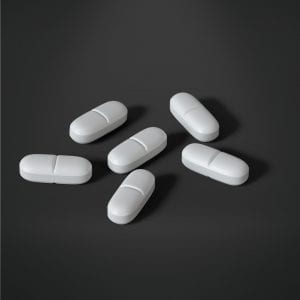 On average, 115 Americans die every day from an opioid overdose—about five times more deaths compared to two decades ago. These drugs—which include prescription pain medications, heroin, and illegally manufactured Fentanyl—have a powerful and potentially dangerous effect on the brain.
On average, 115 Americans die every day from an opioid overdose—about five times more deaths compared to two decades ago. These drugs—which include prescription pain medications, heroin, and illegally manufactured Fentanyl—have a powerful and potentially dangerous effect on the brain.
Opioids trigger the release of endorphins, the chemicals in your brain that dull pain and increase feelings of pleasure. Taking opioids over time causes the body to produce fewer of its own endorphins. As a result, the brain requires the drug to produce good feelings.
Over the past 20 years, doctors increasingly prescribed opioids to treat chronic pain, even though the evidence suggests that these medicines are not effective in the long term. As a result, many patients became addicted or began selling their personal prescriptions for profit. This created a cycle of abuse within communities. Yet for some people who experience severe pain, opioids provide the relief they need. This creates a conundrum for health care providers.
Medical researchers are searching for a solution. One large systematic review, which was published in two parts in the journal Pain Physician, details what we know about the problem and potential solutions.
Not surprisingly, a problem as complex as this one requires a broad range of strategies to address it. One important intervention, according to researchers, is strict guidelines for doctors about when to prescribe opioids. These include screening patients to find out if they have a history of opioid abuse, documenting the diagnosis carefully and setting treatment goals.
There is clear evidence of factors that increase a person’s risk for becoming addicted to opioids. People who have experienced a mental health problem, sexual abuse, previous substance abuse, or substance abuse within their immediate family are more likely to become addicted.
There is strong evidence that patients are less likely to become addicted when doctors explain the dangers of opioids and educate them on how to safely store medicines, how to dispose of unused medicines and the consequences of selling their medicines.
If a doctor does prescribe opioids, the evidence shows that patients are less likely to become addicted or sell their medicines if they return for regular appointments where the doctor monitors their pain levels and screens for abuse.
On a broader scale, the review found that a large-scale prescription tracking system helps to reduce overdoses and death. The systems are called prescription drug monitoring programs, or PDMPs. They used an electronic database to track controlled substance prescriptions and report to health authorities information about prescribing and patient behaviors. The systems allow medical professionals to check if a patient is already receiving an opioid from another doctor. When the state of Florida implemented this type of system, they saw a 50 percent decrease in deaths from oxycodone overdose.
What about for patients who are addicted and also experience pain? The evidence shows that the most effective way to treat these patients is through coordinated care, where doctors communicate with each other to address the patient’s pain but without over-prescribing pain medications. This is no easy task. People who abuse medicines go to the emergency department twice more and are hospitalized six times more compared to patients who don’t abuse medicines. But the evidence shows that interventions such as behavior modification therapy, contracts, and pill counting are effective at reducing abuse and helping patients get the pain relief they need.
The take-home message: The opioid abuse epidemic is a complex problem that has developed over decades. Fixing it will require a broad range of strategies throughout the health care system.
Please visit Cornell University’s Bronfenbrenner Center for Translational Research’s website for more information on our work solving human problems.



Speak Your Mind